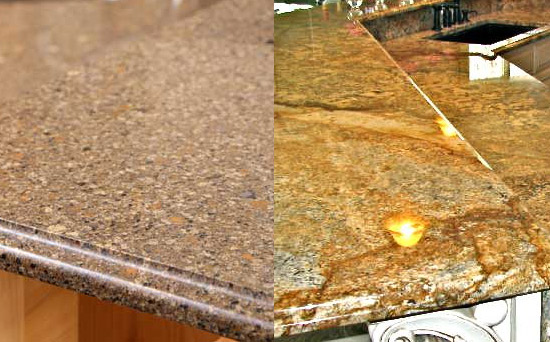House Construction Materials

Granite Vs Quartz Countertops
March 9, 2018In ideal environments, most common construction materials are very durable and can last indefinitely. However, design or construction deficiencies or lack of proper maintenance can result in less-than-ideal conditions under which construction materials will degrade. Degradation can take many forms, including chemical reactions, consumption by living organisms, and erosion or mechanical wear. Traditional building materials – steel, concrete, and wood – usually deteriorate and fail via well-known mechanisms. Even innovative materials that appear on construction sites can degrade, either by these well-understood mechanisms or through exotic, sometimes surprising, reactions and processes.
Natural Building Materials
Building materials can be generally categorized into two sources, natural and synthetic. Natural building materials are those that are unprocessed or minimally processed by industry, such as lumber or glass.
Synthetic materials are made in industrial settings after much human manipulations, such as plastics and petroleum based paints. Both have their uses. Mud, stone, and fibrous plants are the most basic building materials, aside from tents made of flexible materials such as cloth or skins. People all over the world have used these three materials together to create homes to suit their local weather conditions.
In general stone and/or brush are used as basic structural components in these buildings, while mud is used to fill in the space between, acting as a type of concrete and insulation. A basic example is wattle and daub mostly used as permanent housing in tropical countries or as summer structures by ancient northern peoples.
Mud and clay
The amount of each material used leads to different styles of buildings. The deciding factor is usually connected with the quality of the soil being used. Larger amounts of clay usually mean using the adobe style, while low clay soil is usually associated with sod building.
The other main ingredients include more or less sand/gravel and straw/grasses. Rammed earth is both an old and newer take on creating walls, once made by compacting clay soils between planks by hand, now forms and mechanical pneumatic compressors are used.
Rock
Rock structures have existed for as long as history can recall. It is the longest lasting building material available, and is usually readily available. There are many types of rock through out the world all with differing attributes that make them better or worse for particular uses. Rock is a very dense material so it gives a lot of protection too, its main draw-back as a material is its weight and awkwardness. Its energy density is also considered a big draw-back, as stone is hard to keep warm without using large amounts of heating resources.
Wood
Wood is a product of trees, and sometimes other fibrous plants, used for construction purposes when cut or pressed into lumber and timber, such as boards, planks and similar materials. It is a generic building material and is used in building just about any type of structure in most climates. Wood can be very flexible under loads, keeping strength while bending, and is incredibly strong when compressed vertically. There are many differing qualities to the different types of wood, even among same tree species. This means specific species are better for various uses than others. And growing conditions are important for deciding quality.


